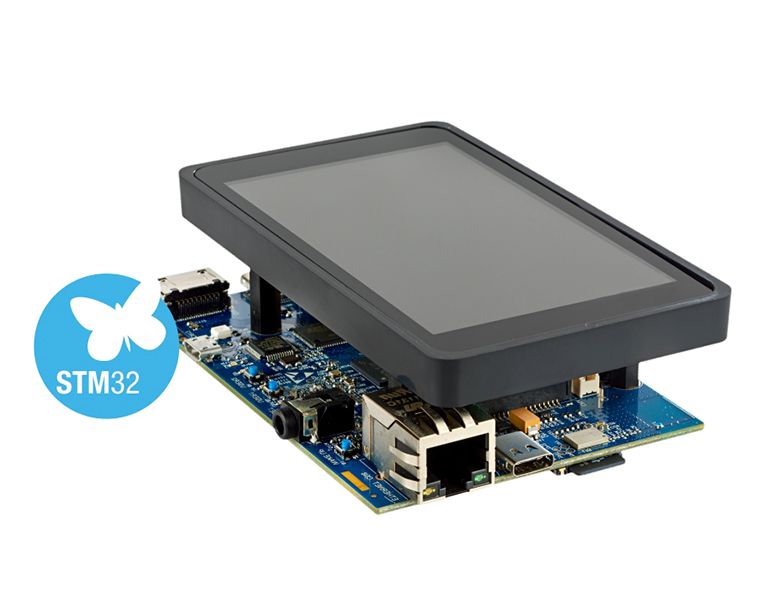
STM32MP1 Discovery Kit 2 by STMicroelectronics
The STM32MP157A-DK1 and STM32MP157C-DK2 Discovery kits leverage the capabilities of STM32MP1 Series microprocessors to allow users easily develop applications using STM32 MPU OpenSTLinux Distribution software for the main processor and STM32CubeMP1 software for the co-processor.
They include an ST-LINK embedded debug tool, LEDs, push-buttons, one Ethernet 1-Gbps connector, one USB-C OTG connector, four USB Type-A Host connectors, one HDMI transceiver, one stereo headset jack with analog microphone, and one microSD connector.
To expand the functionality of the STM32MP157A-DK1 and STM32MP157C-DK2 Discovery kits, two GPIO expansion connectors are also available for ARDUINO® and Raspberry Pi shields.
Additionally, the STM32MP157C-DK2 Discovery kit features an LCD display with a touch panel, and Wi-Fi and Bluetooth Low Energy capability.
Technical details
- STM32MP157 Arm®-based dual Cortex®-A7 32 bits + Cortex®-M4 32 bits MPU in TFBGA361 package
- ST PMIC STPMIC1
- 4-Gbit DDR3L, 16 bits, 533 MHz
- 1-Gbps Ethernet (RGMII) compliant with IEEE-802.3ab
- USB OTG HS
- Audio codec
- 4 user LEDs
- 2 user and reset push-buttons, 1 wake-up button
- 5 V / 3 A USB-C power supply input (not provided)
- Board connectors:
- Ethernet RJ45
- 4x USB Host Type-A and USB-C
- HDMI Stereo headset jack including analog microphone input
- microSD card
- GPIO expansion connector (Raspberry Pi shields capability) and Arduino Uno V3 expansion connectors
- On-board ST-LINK/V2-1 debugger/programmer with USB re-enumeration capability: Virtual COM port and debug port
- STM32 CubeMP1 and full mainline open-source Linux STM32 MPU OpenSTLinux Distribution (such as STM32MP1Starter) software and examples
- Support of a wide choice of Integrated Development Environments (IDEs) including IARTM, Keil, GCC-based IDEs
- 4” TFT 480×800 pixels with LED backlight, MIPI DSISM interface, and capacitive touch panel
- Wi-Fi 802.11b/g/n
- Bluetooth Low Energy 4.1
Purchase
Contribute
Have some info to add for this board? Edit the source for this page here.
Adafruit Blinka Installation
We use a special library called adafruit_blinka (named after Blinka, the CircuitPython mascot) to provide the layer that translates the CircuitPython hardware API to whatever library the Linux board provides.
For example, on Raspberry Pi we use the python RPi.GPIO library. For any I2C interfacing we'll use ioctl messages to the /dev/i2c device. For SPI we'll use the spidev python library, etc. These details don't matter so much because they all happen underneath the adafruit_blinka layer.
